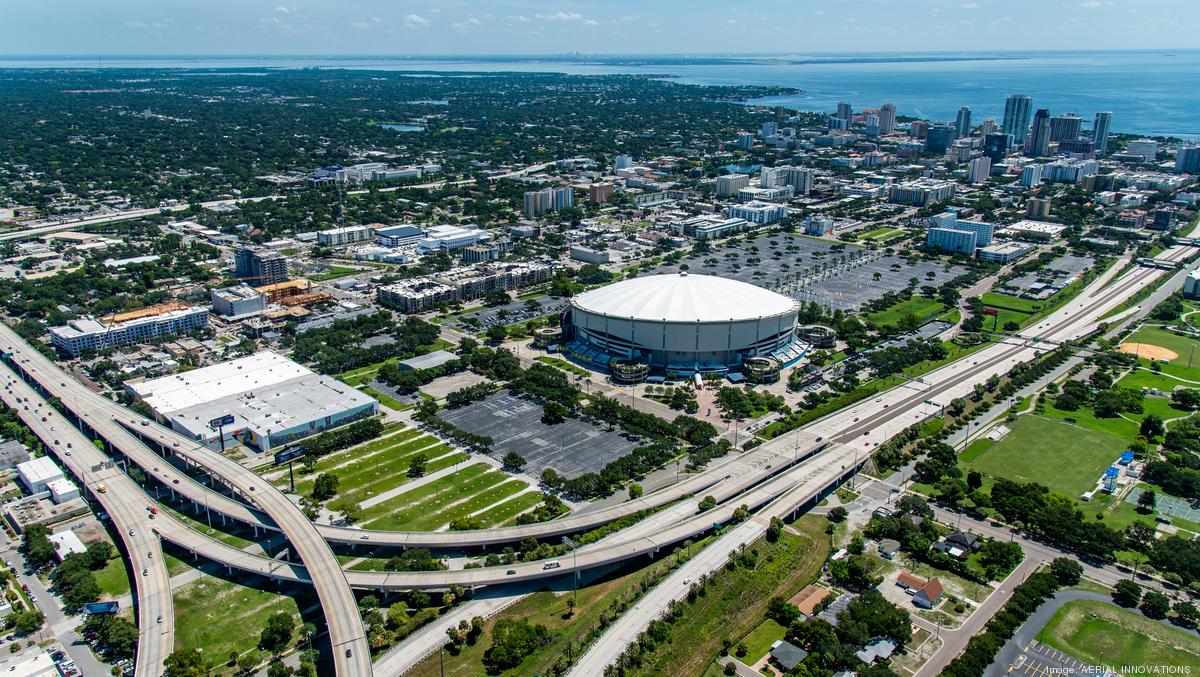
St. Petersburg Mayor Ken Welch is tapping the Hines/Tampa Bay Rays team to redevelop the 86-acre Tropicana Field site.
His administration now refers to the site as the Historic Gas Plant District, a hat tip to the neighborhood displaced from the site some half-century ago in the pursuit of Major League Baseball.
“This history of the Historic Gas Plant community, culminating in its dislocation, is the story of a dream deferred. But through my decision today and our collective perseverance, collaboration and intentional actions moving forward, it will no longer be a dream denied,” Welch said.
Welch’s pick is likely the most prudent move to ensure the future of Major League Baseball in St. Pete. As part of the development team driving what will be a mixed-use district with baseball as a central theme, the Rays will now have a vested interest in making the site work beyond 2027 when its current contract with the city expires.
Announcing his pick during his State of the City address Monday, Welch said he was “fully confident” the decision was the best path forward for the city.
“As a child of the Historic Gas Plant District, I consider it to be sacred ground. It has a rich history, which predates baseball and our current redevelopment initiative. It was a community,” Welch said.
“It was evidence of the perseverance of the African American Community that endeavored to turn a redlined part of our city into a neighborhood of commerce, faith and family. And it represents a monumental unfulfilled promise that will finally be kept — the promise of inclusive economic development, the promise that this land will benefit all, not in spite of, but precisely because of, the fact that the development will be focused intentionally on economic inclusion for all.”
Functionally, the proposal puts baseball at the center of the plan, with a stadium shown in renderings as the centerpiece of the district flanked by a Booker Music Hall, towers, park space and Booker Creek. In all, it includes 14 acres of green space as well as a Booker Creek Greenway, a new Woodson African American History Museum and a Campbell Park Youth Center.
The Hines/Rays proposal also earned heavy backing from the business community, including the St. Petersburg Area Chamber of Commerce.
The proposal earned praise from staff who evaluated the proposals and created lists of pros and cons, notably its comprehensive team, its adherence to the Welch administration’s principles and strong buy-in from community leaders and businesses.
The plan claims an overall development of 8 million square feet, a $1.4 billion economic impact and $656 million in annual wage generation. Additionally, it estimates 5,500 full-time equivalent permanent jobs and 1,050 full-time equivalent construction jobs.
On affordable housing, a major priority for Welch, the plan calls for 1,459 residences. Of those, 859 would be on-site within the district. The remaining 600 located off-site would utilize housing grants. The affordable and workforce units would be available for those earning between 50% and 120% of the area median income. The plan calls for delivering 90% of those units within 10 years.
The proposal, careful to borrow from Welch’s own administrative language, also offers a community benefits program, including $50 million from the development team to the South St. Pete community. That includes $17.5 million for education, $15 million for residential, $13 million for employment, $3.75 million for talent pipeline and $750,000 for community outreach.
“The best path for progress is the path that includes opportunities for everyone and, yes, in St. Petersburg, history does matter,” Welch said.
The plan relies heavily on tax-increment financing, with a $150 million estimated ask.
Welch called the plan the “next step” in a long process, noting that the development team would be a crucial city partner, and that continued work would be done to ensure plans adhere to his administration’s pillars for progress, which includes, among other things, intentional equity and inclusivity.
The Hines/Rays proposal beat out another top-performing submission from Sugar Hill, one of two finalists from the previous RFP process launched under former Mayor Rick Kriseman.



